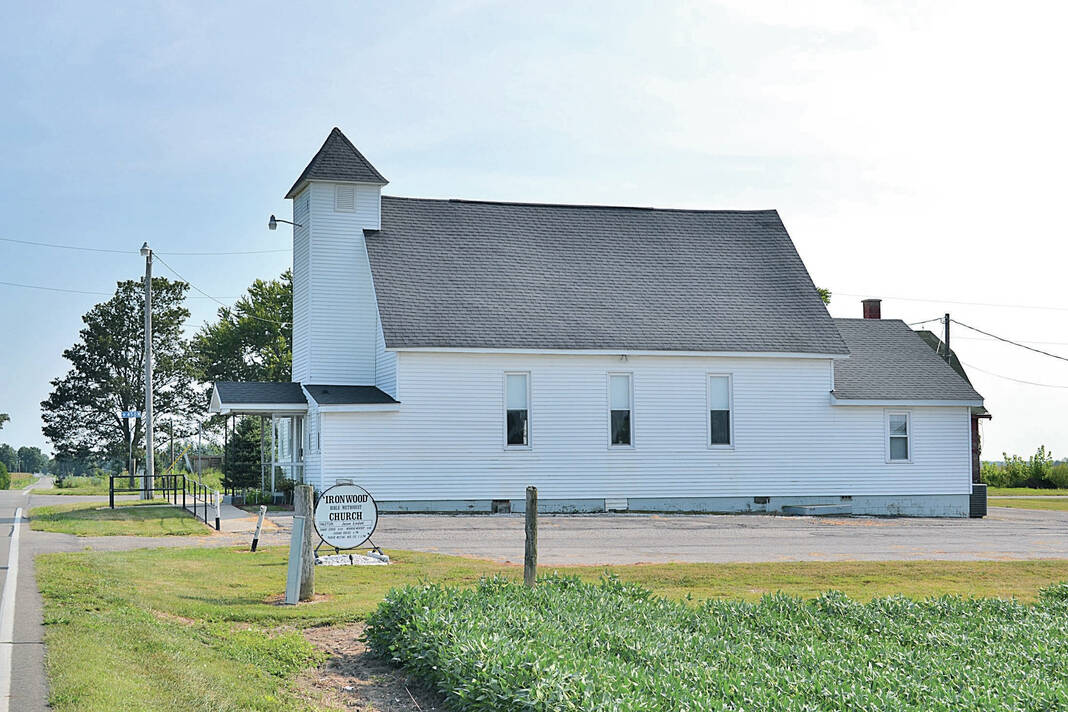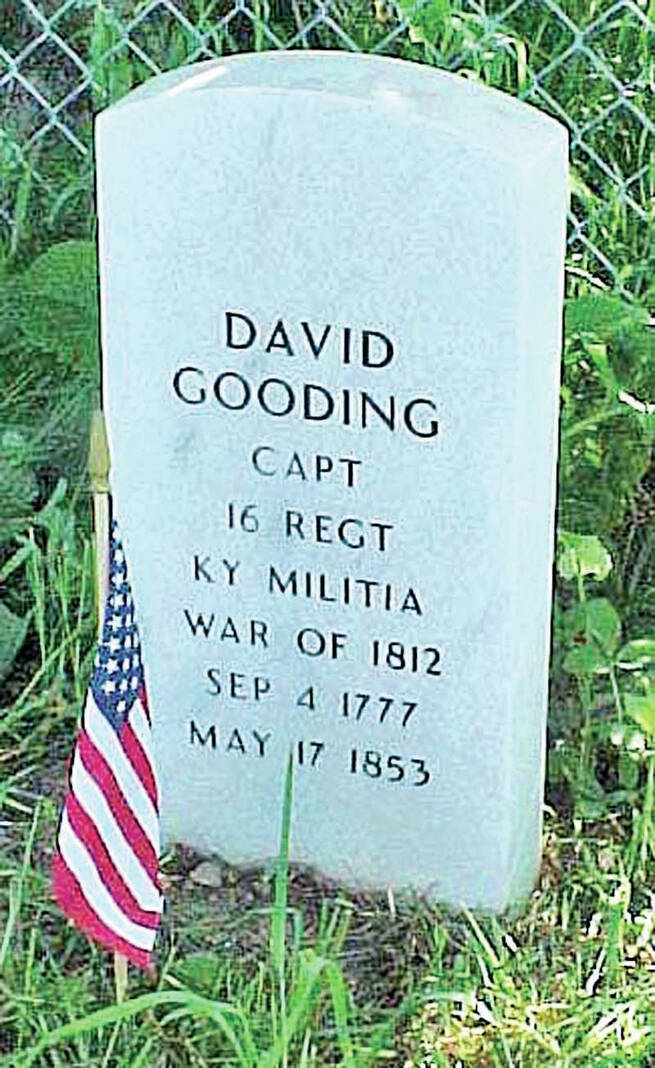


Stephen Jackson
By Stephen Jackson | For The Times-Post
The future of Lafayette Township’s Keller’s Station community — including residents’ hopes in the 1800s of it becoming a boom town — was complicated by a wind storm, which took with it much of the townspeople’s efforts and aspirations.
As a result, the area (which, as mentioned last week, had been known as Mt. Herman and Buttermilk Station) later became known as Gale Center.
Another version of the origin of the name was offered in an April 24, 1894, newspaper article stating, “Gale Center is a new city that had its birth in Madison County yesterday. The new town gets its name from Gale Vernon of Anderson who owns the town site.”
Whatever the name origin, it was started while the boom throughout the gas belt was at its highest and just before the bottom dropped out.
A factory was located at the place and a 100 acres of land was divided into town lots.
These lots were sold at one hundred dollars apiece and they went like hot cakes.
Under the agreement, the lots were not to be paid for until the factory was located.
The factory was built but did not last for any length of time.
The machinery was removed, and the building stood empty for quite a while before it was sold and moved away.
Several of the purchasers of these lots failed to make their payments and, after the factory was abandoned and the prospects of the proposed new town went glimmering, the lots were turned back into one large field.
Another railroad in the township was the reason for more place-names.
Funks Station was established with the coming of the old Michigan division of the Big Four Railroad.
Samuel A. Towell was the first merchant and served as the postmaster.
The name Funks Station appears on area maps dating from 1883 to 1889.
It was originally named in honor of Joseph Funk, a prominent citizen and land owner in the neighborhood, who was at one time a county commissioner.
But, the name was changed in 1887 to Linwood when the post office was established there.
The origin of the name is unknown.
In 1887, John C. May platted an addition to the village that was followed by others, but no regular plat of the place has ever been filed for record.
With the railroad and interurban service, which arrived around 1900, Linwood must have been a thriving community as it supported a general store operated by Given & Bruce and a drug store operated by Charles Hartman.
The Big Four maintained a passenger and freight station until the building of the interurban line close to the town.
The interurban offered local passenger service, which effectively closed down the Big Four passenger service.
Four crossroad place-names complete Lafayette Township.
In 1884, there was a post office called Myers at the intersection of CR 600W and 300N.
One would assume that a neighborhood settlement surrounded the intersection necessitating the need for a post office.
The post office operated for a little over 20 years from June 1879 to November 1899.
Today, nothing remains.
The remaining three place-names all take their names from nearby houses of worship, two of which are still active.
The one that is no longer active was called Olive Chapel.
The church was located near the intersection of County Roads 600W and 450N and, once again, a neighborhood community existed nearby that supported the church.
The area is now void of anything suggesting its earlier activity.
Two long-time standing churches remain that gave their names to settlements nearby.
Although the settlements no longer exists, the churches remain.
The first settlement known as Ironwood was located around the intersection of County Roads 500W and 450N.
It was the site of the 1886 Ironwood Christian Church, a frame church that burned shortly after 1900.
It is now the site of the Ironwood Methodist Church.
The second settlement and the final place-name in Lafayette Township was called Elm Grove.
The area surrounding the intersection of County Roads 300N and 300W had a population sufficient to warrant a one-room school house and a church beginning circa 1869.
It can be assumed that both the Elm Grove School and the Elm Grove Christian Church derived their names from a grove of elm trees that once stood in the area.
The school came first as the church was first organized in the school house May 9, 1869.
Three years later, in 1872, a frame house of worship was erected.
The church and school house remain although the old frame school house was replaced in 1888 with one made of brick, which is now a private residence.
The Gooding Cemetery
According to the American Legion’s Cemetery Record of Deceased Veterans, a pivotal figure in American history rests in this little pioneer cemetery in Madison County.
The Legion lists David Gooding as a veteran of the War of 1812 and buried in Grave 2, Row 1, Lot 1.
David Gooding was actually a captain during that conflict and served as an aide-de-camp under Col. Richard Johnson.
As related by Gooding’s grandson Judge David S. Gooding in historian Samuel Harden’s “The Pioneer,” Capt. David Gooding fought in the Battle of the Thames and was responsible for killing the Shawnee leader and warrior Tecumseh.
According to historian John Forkner, Colonel Johnson was wounded at the Battle of the Thames by Tecumseh, and it may have been at this juncture that Gooding killed the Shawnee chief since aide-de-camps stayed close by commanding officers whom they would be assisting.
The charismatic Tecumseh and his many Native American followers were allies to the British.
When Tecumseh was killed, the Native American contingent collapsed, and without the tribal forces, the British lost the Battle of the Thames, a turning point in the War of 1812, America’s second fight for independence.
According to historians, Capt. Gooding never bragged about killing Tecumseh; the soldiers under his command, who witnessed the event, gave him the credit, even while others of the time claimed the honor.
Another historian and author, James Alexander Thom, in his epic Panther in the Sky— the story of the War of 1812 and the participants from all factions — also gives Capt. Gooding the credit for killing Tecumseh and thus turning the tide of battle and the war. Capt. David Gooding was born Sept. 4, 1777, and died May 17, 1853, (according to the latest research).
How did Capt. Gooding get buried in Madison County, Indiana? The Goodings were from Kentucky, where the captain’s son Asa was born.
In 1827, Asa and others of the large Gooding family moved to Rush County, Indiana, and from there to Hancock and Madison counties.
Evidently, Capt. Gooding migrated with the family and settled with those members who came to Section 9 in Lafayette Township.
Madison County Historian Stephen Jackson is leading a series of “First Sunday” presentations covering the History of Madison County townships. The talks are set for 2 p.m. on the first Sunday each month in the Bowman Room at Museum of Madison County History, 11 W. 11th St., Anderson. The talks began Sept. 4 and run through Nov. 5, 2023. The information he prepares for those presentations form the basis of this series of columns in The Times-Post.